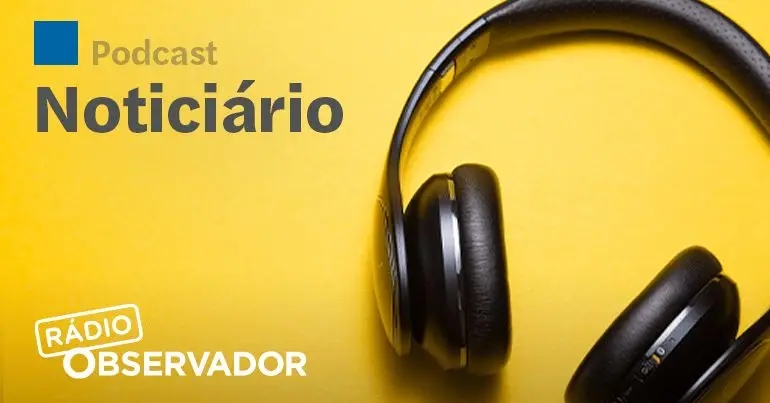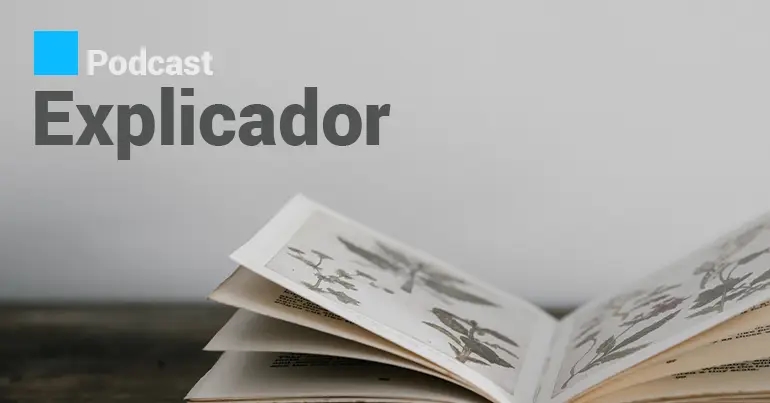How Taylor Swift Created Internet Fandom

In looking back at the 2000s for Hit Girls: Britney, Taylor, Beyoncé, and the Women Who Built Pop’s Shiniest Decade (Ballantine Books), out on June 17, journalist Nora Princiotti had to retrace her own history. In exploring the brilliant way that Taylor Swift engaged her audience in the early days of social media, she revisits the way her own Swift fandom took flight in an exclusive excerpt for ELLE.
When I think of Taylor Swift in the context of the aughts and ask myself to define the legacy of her 2000s work, what I come up with does have a lot to do with where she—and the entire state of pop music—is now. It was in this era that Swift wrote the blueprint for modern standom and began developing her fan base, in concert with the rise of social media, into a hugely powerful tool. Both a defining feature and a power source for modern pop stardom is the relationship between the artist and their online fan base, and I would argue Taylor Swift has the single biggest hand in creating that dynamic.
There weren’t a lot of fourteen-year-olds on country radio, nor were there a lot of women, so name-checking the biggest star in Nashville in a tune about a girl hoping a former beau will remember her fondly when he hears her favorite song was pretty savvy. Still, getting airplay was an uphill battle. In an Entertainment Weekly interview in 2008, Swift’s manager, Rick Barker, described the campaign to get “Tim McGraw” on the radio. “Radio does research,” he said. “And we have no idea who they’re researching, but it was saying people weren’t digging ‘Tim McGraw.’”
This simply couldn’t have been right. While the song was meeting resistance from radio, Swift’s social following was modest but growing, in the tens of thousands (she had 34,000 MySpace friends as of November 2006). And those followers loved “Tim McGraw.” Music was big on MySpace—users could share playlists; everyone got to pick a signature song that would auto-play whenever anyone visited their profile, and there were a lot of users who liked presenting themselves alongside this sharp young woman with gorgeous curls who was putting stories about their lives and their concerns at the center of her songs. They might have lacked the volume of radio, but a grassroots movement was building around the song and around Swift, who was just as native to MySpace as any of the users who were discovering her on it.

When the song started to gain traction, Swift blogged on her page that she wanted to thank any radio stations that were playing “Tim McGraw” and asked followers to comment where they’d heard it. ... It became her own form of market research, a counterargument to the radio surveys that had underestimated the song. “We were able to take those moments back to radio in individual markets and say, ‘You’re saying research is telling you it’s not doing that great, but here are 85 people who are telling us they love your station because you played ‘Tim McGraw,’ ” Barker said. MySpace helped them demonstrate that Swift had an audience that did listen to the radio, but maybe it wasn’t the group of people most likely to answer a survey call or be the head of household listed in the Whitepages. And that got them to play the song.
Swift used her MySpace actively, a precursor to how she would engage with her fandom years later. She’s always had a bit of Tracy Flick to her, and in those days, she corralled fans with the energy of an overachiever running for student council president. When Swift won the CMT Music Award for Breakthrough Video of the Year the following spring, she told every one of her supporters that her victory was theirs, too. “This is for my MySpace people and everybody who voted,” she said in her speech. Backstage, she told interviewers that she was spending at least 30 minutes a day thanking people who’d showed support for her online with individual comments. “I’m a junior in high school, this is how we campaign,” she said.
By then, Swift’s debut album, Taylor Swift, was in the middle of a slow, but fierce burn. It sold 39,000 copies in its first week, good for a new artist, but it kept selling long after. The album hit a million in sales by its first birthday and reached its peak at No. 5 on the Billboard 200 in January 2008. The album wound up spending 157 weeks on the chart, the longest stay for any U.S. debut release in the 2000s. The MySpace listens rolled in and “Tim McGraw,” “Our Song,” “Picture to Burn,” and “Teardrops on My Guitar” all became country hits. Swift spent the summer touring as an opener for Rascal Flatts and joining Faith Hill and the actual Tim McGraw on tour. She was a country artist making country music with country musicians, songwriters, and producers for a Nashville label, but her nascent fan base had more demographic overlap with a Top 40 audience than, say, Brooks & Dunn. And in an early hint at what was to come, “Teardrops” got a music video that aired on TRL and a Top 40 remix, and it went all the way to Swift’s lucky number 13—of course—on pop radio.
“We didn’t say ‘Swifties,’ yet, but being a fan of Taylor’s was like belonging to a club—a club full of all your friends who loved and felt and longed in the same way.”
It shouldn’t have been a total shock that a songwriter who synthesized the angsts and joys of teenagers would have found an audience in 2006. If you were part of that era’s teen microgeneration, odds are good you spent a lot of time online. If I was home, the green “available” dot on my AIM screen (username: mangorainbow99) was reliably lit up. My friends and I would chat there for hours, far more intimately than we ever would have in person. The digital universe felt somehow less self-conscious than real life. My average answer if asked how I was doing in person would be something like “fine, thanks,” while my average status update maxed out its character count in angsty Tumblr poetry. The other thing I spent a lot of time doing on the internet was searching around for new music, both the thing that made me feel the biggest rush of joy and something that was beginning to twist itself into the backbone of my identity. I’d spend hours clicking through YouTube videos and listening to poorly named LimeWire files or 10-second iTunes Store previews, hunting for something I could get stuck in my head.
To a girl with big feelings in search of a vehicle to let them out, Swift was perfect. In her music, she always had a perfect line ready and while she felt rejection from cliques and boys, she always got the last laugh. We didn’t talk about parasocial relationships with celebrities in those days, but she felt like a friend, both because she paid attention to fans and because she acted like a peer. She let you into her life by vlogging her days—posting selfie-style videos of herself and friends lip-synching to Katy Perry’s “Hot ’n’ Cold” or “Wannabe” by the Spice Girls interspersed with behind-the-scenes footage from shows and her life out on the road. The circumstances of her life weren’t normal, but she was still a teenager—in one old vlog, Swift and her mom went to the dentist to get a replacement retainer because, as Andrea Swift chided, Taylor was always leaving hers in hotel rooms.
We didn’t say “Swifties,” yet, but being a fan of Taylor’s was like belonging to a club—a club full of all your friends who loved and felt and longed in the same way. And any good club needs a clubhouse.
The World Wide Web went live on April 30—Taurus queen!—of 1993. Much of the online infrastructure that already existed, though, had been designed around fandom. In the 1970s, fans of the Grateful Dead from Silicon Valley, in particular, started some of the earliest internet affinity publications. The first digital bulletin board was called Community Memory, and it sprung up out of a Berkeley record store in 1973 so that a group of locals equally invested in the tech and counterculture scenes could discuss music and literature— but mostly the Grateful Dead. The same year, an artificial intelligence researcher named Paul Martin from Stanford created what was essentially an early listserv so that he and his buddies from the lab could streamline their frequent email conversations about the Dead. Two years later, he made that list semipublic with the help of ARPANET, the U.S. Department of Defense’s experimental communication network that was the forebearer of the modern internet.

For a long time, these were heavily male spaces. But as early as the 1990s, women on the internet were real, and they were spectacular. In 1994, the researchers Nancy Kaplan and Eva Farrell wrote an ethnography of “young women on the net,” which pointed out that groups of teenage girls were some of the most participatory users of online bulletin boards that were owned and operated, and presumed mostly to be used, by men. Soon enough, those users were creating their own fan websites. The arrival of GeoCities, a user-generated website platform, after 1994 was another breakthrough; it made for the easy creation of clip-art-laden fan pages for the Backstreet Boys, *NSYNC, and Destiny’s Child and for TV shows like Buffy the Vampire Slayer or Dawson’s Creek. By 2000, women were getting online at faster rates than men according to a Pew Research Center study. Follow-up research in 2005 showed that 86 percent of American women between 18 and 29 were online, compared with 80 percent of their male counterparts. By the end of the decade, it wasn’t just about who was joining the internet, there were simply more women online than men. This was especially true on social media. In 2009, 21 percent of American women online had Twitter accounts, but only 17 percent of men did.
The more women got online, the more it became apparent they wanted different things out of the experience than their male counterparts. Describing the teen enthusiasts populating the nineties message boards, Kaplan and Farrell wrote that the women wanted “to maintain connection rather than to convey information,” when they posted. The Pew report described the new female users as “Instant Acolytes,” who were generally more enthusiastic about the internet than male users because their “applications are as much social as transactions-oriented.” The person they’re describing sounds a lot like a fangirl.
When I hear the word “fangirl,” I hear it with all its implied judgment and hysteria. But by any reasonable definition, I am one. My Spotify Wrapped data has never placed me outside the top 1 percent of highest-volume Taylor Swift listeners on the platform, which, according to a Wall Street Journal analysis, means I am listening to at least 6,000 minutes per year. Even if I cut that in half—which feels conservative—to account for the fact that I imagine I spent less time listening in her early days when her catalog was not as deep—that means I have spent well over a month of my existence listening to her songs. And the bounds of my interest reach far beyond passive enjoyment. I’m part of no fewer than four group texts specifically devoted to talking about Taylor Swift, each of them named for a different Swiftie in-joke. (“Taylor Support Group,” “Still Swift AF Boi,” “Grab your [passport emoji] and my [hand emoji],” and “Free Dibbles”—IYKYK.) I have friends I’ve never met in person but feel genuinely close to because we talk about Taylor Swift together. I know song lyrics by heart, that Swift has had Lasik eye surgery, that her cat Meredith has an estimated net worth of $93 million, and after two glasses of Chablis I can make you a solid case that the album 1989 secretly tells the story of the time Swift and Harry Styles committed vehicular manslaughter together. I might balk at the label, but that’s fangirldom.
As online life has become more and more synonymous with real life, fandoms like Swift’s have become bigger and more visible features of the modern web, showcasing the public-private nature of the internet, where individuals, often under the guise of anonymity, routinely share their intimate thoughts in front of the entire world. Together, these individuals are a highly mobilized collective, and the pop stars that command these groups are highly sought after as political endorsements, salespeople, and bellwethers of public opinion. Swift is a beautiful songwriter, but the greatest narrative she’s shaped is that of her career. As that’s made her the biggest star on the planet, the importance of narrative has grown for pop stars in general and become the thing that mobilizes their audiences. Swift and the Swifties built modern fandom to be massive, persistent, and motivated—ignore them at your own peril.
Excerpted from Hit Girls by Nora Princiotti. Copyright © 2025 by Nora Princiotti. All rights reserved. No part of this excerpt may be reproduced or reprinted without permission in writing from the publisher.
elle






